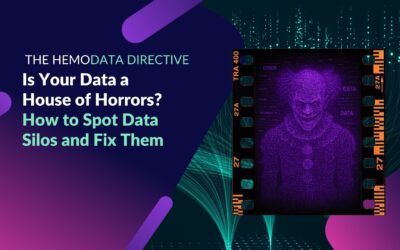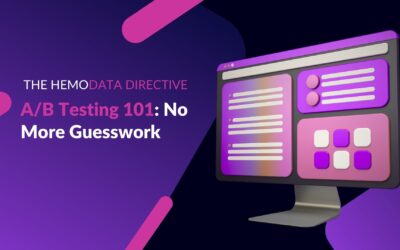Let’s face it: most data science textbooks aren’t exactly page-turners. Packed with dense equations, intimidating jargon, and abstract examples about imaginary datasets, they’re rarely helpful for businesses trying to solve real problems. If you’ve ever felt overwhelmed or annoyed by a data science textbook, you’re definitely not alone.
Textbooks tend to treat data science like rocket science. Sure, advanced math is great for researchers developing the next breakthrough algorithm. However, most businesses don’t need those, not even a fraction of them. They just want clear insights, optimized processes, and automated tasks that make life easier.
So, why do we complicate things?
Here’s a secret: Good data science isn’t about how many equations you can squeeze onto a slide. It’s about how clearly you can solve a business problem.
Most organizations benefit from straightforward solutions:
- Reliable Data: Easily accessible, accurate data that’s ready whenever you need it.
- Automating repetitive tasks: Freeing your team from repetitive, boring tasks so they can focus on meaningful work.
- Real-time analytics: Actionable insights delivered simply through dashboards, alerts, and easy-to-understand forecasts.
This is where AI, and especially large language models (LLMs), start to change the game.
AI to the Rescue: How LLMs Make Life Easier
AI tools, especially LLMs, are bridging the gap between complex analytics and everyday business use. They’re not replacing your data team; they’re empowering everyone across your organization to interact with data more easily.
- Auto-Generated Insights & Summaries: Instead of parsing endless dashboards, AI summarizes key takeaways, anomalies, and trends, helping teams make faster decisions.
- Content + Campaign Support: AI can generate first-draft copy for marketing, A/B test ideas for experimentation tools, or help personalize emails based on user behaviour.
- Data Cleaning & Categorization: AI models can cluster, tag, and standardize messy data before it enters your analytics tools, saving analysts hours every week.
- Multi-Channel Sentiment Synthesis: LLMs can analyse tone, context, and frequency across product reviews, social media, customer support transcripts, and even sales call notes, then summarize overall sentiment, broken down by product line, region, or customer segment.
This helps brand, CX, and product teams make data-backed prioritizations, especially when feedback is noisy and unstructured.
- Revenue Intelligence + Churn Modelling Using Unstructured Data: LLMs can pull patterns from CRM notes, emails, and meetings to highlight leading indicators of deal success or churn risk (e.g., low engagement, recurring objections, sentiment shifts). Bonus: These insights are more nuanced than traditional scoring models.
A game-changer for revenue ops and success teams who want to reduce blind spots and improve forecasting accuracy.
- Market & Competitive Intelligence Summarization: LLMs can synthesize large volumes of competitor updates, industry news, and pricing signals from PDFs, earnings reports, and web scraping. These insights could then be served up as a one-pager tailored to your leadership team or product squad.
This enables executive and strategy teams to stay informed and respond faster to market shifts.
The impact? Your sales team spends less time cleaning CRM data and more time closing deals, marketing gets clearer insight into what’s working, without waiting on analysts and customer support can prioritize tickets faster, based on real-time intent and sentiment.
How We Do Things at HEMOdata
At HEMOdata, we’re all about making AI practical (and painless). Our teams don’t spend their days buried in repetitive tasks, they’re busy closing deals and creating great campaigns.
- Sales: We handle lead cleanup and outreach groundwork through AI-driven data cleaning and categorization, enabling our sales team to craft precise, personalized messages that resonate.
- Account Management: Our account managers automate repetitive weekly tasks like partner information sharing, freeing up valuable time for strategic conversations.
- Marketing: Our marketing team gets fresh, AI-generated ideas for compelling content, which actually inspired this blog post you’re reading. (How did I do?)
Simply put, we let AI handle the tough stuff so our team can focus on what they do best.
What’s Next for Data Science?
As AI tools become increasingly accessible, organizations that embrace simplified and practical data science will thrive. Expect to see:
- Increased Collaboration: Non-technical teams collaborating seamlessly with AI tools, enhancing decision-making across the entire organization.
- Greater Accessibility: Advanced analytics becoming user-friendly enough for everyone, not just data specialists, making insights available organization-wide.
- Continuous Learning: Organizations will become more adaptive and responsive by leveraging real-time data insights to make proactive decisions.
You don’t need to overhaul your tech stack or hire a PhD. Start with a single workflow or use case:
- Identify a friction point (slow lead qualification, delayed campaign feedback, etc.)
- Define a simple metric of success.
- Use a behavioral analytics or AI tool to run a small test.
- Measure, learn, iterate.
At HEMOdata, we’re obsessed with making data useful. Whether it’s building AI-driven workflows, simplifying analytics, or helping your team ship faster, our goal is clarity, not complexity.
Because the best data science isn’t the one that looks smartest. It’s the one that works.
👉 Want to simplify your data and turn AI into a growth enabler? Talk to us. We’ll help you make it practical.
Want to understand where you’re at with your AI journey? Download this AI Readiness Workbook!




